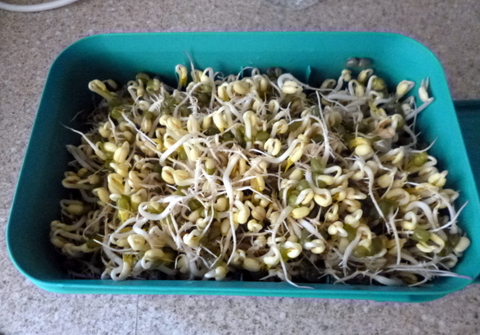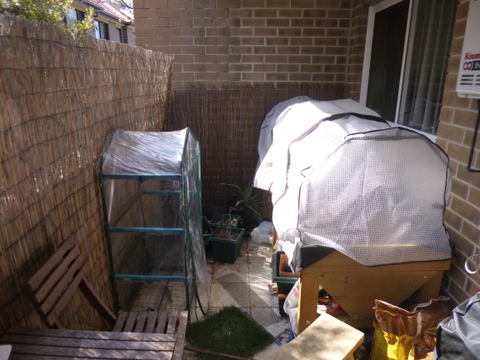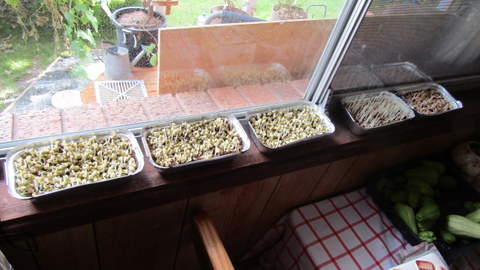When I first came up with the idea for this series of articles it sounded to me like the title for an ‘end-of-the-world’ science fiction movie rather than being about permaculture and small-scale food growing. (maybe I was confusing Zone Zero with Ground Zero, who knows?)
It doesn’t matter how big your yard is, there are always those of us who want more space to grow our own food and at this point I will put my hand in the air, but the issues we are facing these days are that –
- Australia is one of the most urbanised countries in the world – more than 96% of the Australian population (around 24.5 million) live in urban areas and 68% live within the greater metropolitan areas of Australia’s 8 capital cities. (Livability | Australia state of the environment 2021)
- The average size of housing blocks for new houses in Australian capital cities has decreased by 13% (64 square metres) over the last ten years, from 496 square metres in 2012 to 432 square metres in 2021.( New houses being built on smaller blocks | Australian Bureau of Statistics)
- The average new house size has risen to 239m2 in 2022 (Average house size in Australia | Compare the Market)
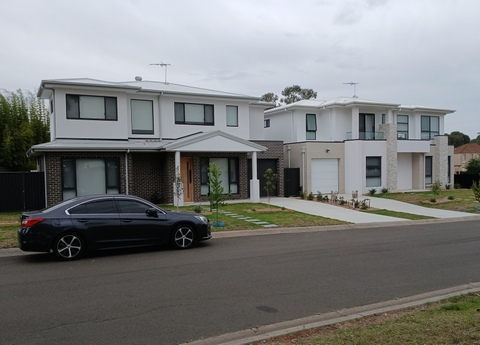
Knock down/rebuild also has an effect, some months ago this block had a single story dwelling on it and lots of growing room, it now has two two-story dwellings and very little growing room
When we bought our house and land some 45 years ago, I considered our 600m2 block of land to be quite small, but now it seems that it is comparatively large. By contrast our house at 120m2 is almost exactly half the size of new builds today. So, if you do the math, between increasing house sizes and decreasing block sizes, our yard area where we can grow stuff is 480m2 (minus space for the garage and a couple of sheds) but a new build today would have on average a little under 200m2. That means that our block that I thought was too small is now almost two and half times bigger than growing area for a newbuild today!
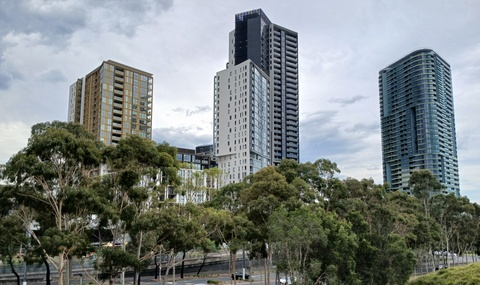
High rise living is becoming more and more common
Also, add to that, a bit over 10% of the Aussie population (which equates to over 2.5 million people) live in apartments, without access to land where they live at all.
It seems to me that if we want to have the benefits of growing our own food, (and there are many) we need to look seriously at how to grow food in our zone 0.
The Permaculture Zone Tool
If you are not familiar with the concept of Zones in permaculture, it was developed by Bill Mollison and David Holmgren as a tool to allow areas of similar use, activities and frequency of visitation to be grouped together when developing a permaculture design. The idea for permaculture zones was laid out in the original book about permaculture - ‘Permaculture One’ and was conceived as a series of concentric circles (Zones 1 to 5) starting at the area around the house (zone 1) and moving towards untouched wilderness areas (Zone 5). Each zone may be described as below –
Zone 1: Nearest to the house, for elements that require frequent attention, or be visited often
Zone 2: Farther from house the place for perennial plants or self-maintaining plants and elements needing infrequent work.
Zone 3: Occasionally visited areas where main crops are grown, for domestic and for trade use. After establishment, care and maintenance is minimal
Zone 4: Semi - Wild food gathering (e.g. nuts, native fruits, mushrooms) wood for Fuel, Self-seeding trees, soil microbes semi-wild.
Zone 5: Wilderness area: a rarely visited area often linked with neighbouring wildlife corridors.
In the original “Permaculture one” and “Permaculture Two” there was no mention of a Zone 0, this came later and is referred to in Bill’s seminal work “Permaculture: A Designers’ Manual”. Zone 0 may be described as –
Zone Zero: Home: indoor production (sprouts/ferments), processing food, waste, water & energy collection, repairs and education, relax, work and where you practise reduced consumption and re-cycling.
Mung bean sprouts: easy to grow, nutritious abd you don't even need light to grow them!
Zone Zero – My Terms of Reference
After some reading, I have been unable to find a comprehensive description of what is entailed in Zone 0, perhaps the best is from the Permaculture Research Institute – “Zone 0: the centre of human activity, for example, the house.”
For the purposes of this series of articles on growing food in Zone 0, I have included in the following areas to be covered by the term ‘zone 0’ -
• The dwelling place eg house, apartment, flat, townhouse, unit or tiny house.
• Patios and decking attached to the house and balconies attached to flats, units and apartments
• The garage, as it is quite often integral with the house.
You can grow food on a small 5.6m x 2.1m balcony if you are creative
Growing Food in Zone 0 – Pros and Cons
Wherever you grow it, growing your own food has several advantages to it, including –
- It will save you money
- The produce is fresher, improving your family’s nutrition
- Improved flavour
- Lower food miles
- No chemical residues:
Growing soil sprouts on a west-facing windowsill
- It shows kids where their food comes from
- It enables you to eat a greater variety of foods
- The satisfaction which comes from growing and eating your own produce is amazing.
- No packaging to try and recycle or send to landfill
- Reduced environmental impact of fertiliser and pesticide use
- Improved resilience if supply chains are interrupted.
Having said that, there are a number of pros and cons specifically associated with growing your food within your own Zone Zero (a Zone Zero Farm, if you will), and while they do line up pretty well with growing food in containers, because that’s how you do it for the most part in Zone Zero, there are also some variations -
Pros
Perfect for small urban spaces – Like the various spaces in our Zone Zero, you don’t need a huge area to grow your own food if you make the most of what space you have.

They can be moved easily – This pro has a number of points in its favour, because you can move your plants around to find the microclimate that suits them best, in and out of the sun (depending on temperatures and time of day), or to a damp or dry area. Growing your zone 0 food in containers also means that you can take them with you when you move to a new zone 0. This can be a huge advantage if you are renting.
It expands the range of plants you can grow – You are not limited by your soil type, or soil pH etc, you can alter your growing medium to suit the plants you want to grow, whether they need good drainage, or a more solid clay soil, neutral pH (as most veg does) or a bit more alkaline or acid (like blueberries). You can grow what you want by tailoring things to your plant’s needs.
Great idea where there is no access to soil – If all you have to grow on is a balcony, patio, deck or inside your dwelling place, you don’t need access to soil to be able to grow food!
Part of a Small balcony garden
They look nice and can be arranged artistically – If you want to grow food but also want the aesthetics to be right for your zone 0, growing in containers gives you the flexibility to arrange your crops so they look nice as well as being productive, then rearrange them if you are still not satisfied.
Plants with different needs can be grown side by side – Thirsty tomatoes can be grown beside drought tolerant Mediterranean herbs, carrots can be grown in fine soil next to shallow rooted crops like lettuce or silver beet do well in a soil that retains moisture.
When plants finish cropping, they can be removed and replaced easily – there is no need to spend time and effort digging them out, just remove them from the pot, replace your potting medium and you are ready to go again.
Growing food indoors – In the right situation (plenty of light) some crops do very well when grown indoors in containers. Using grow lights means you can grow your food crops anywhere indoors – on top of tables, cupboards, in bookshelves, closets or garages.

Crops in Zone Zero are kept close to you where you can keep an eye on them - checking regularly to see if they need watering or have developed any pest of disease issues is much easier, remember - ‘the best fertiliser is the gardener’s shadow’
They are easy to access – If you are, how shall I put this, more mature in years (like me), having easy access to your crops by growing them in containers with an elevated situation such as on benches, shelves, tables or in a planter box on legs. This means you can plant out, harvest, water, check for pests and diseases all without bending over. That must be a win!
Weeds are a thing of the past – if your growing medium is free of weed seeds, wind blown weed seeds will not be able to access your Zone Zero crops so no more weeds!
It is a protected environment – your Zone Zero food plants will be isolated from extremes of temperature, high winds, hail and most other vegetation hazards that nature can throw at them.
Stress Reduction - Plants in your Zone Zero may help to reduce psychological and physiological stress when times are tough.
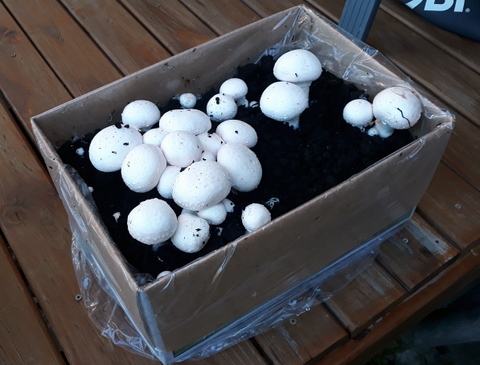
Mushrooms are a great Zone Zero crop that also don't need light
Cons
There are not many, and for the most part they are easily dealt with, but it is good to understand what you are getting into before starting.
Frequent Watering - Probably the biggest ‘con’ of growing food in containers is the need for frequent watering as they dry out more quickly than when grown in the soil. This is made worse if unglazed terracotta pots are used, because they are porous and can wick moisture from the soil and allow it to evaporate. Some fixes for this are mulch, self-watering pots, and putting small ollas in pots.
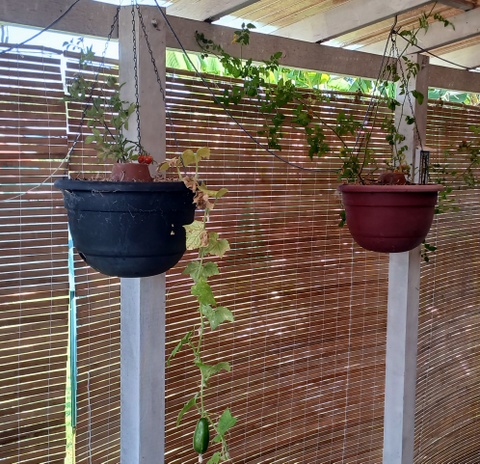
small ollas in pots can reduce the need for frequent watering
The Growing medium can become hydrophobic – If the dryness is allowed to continue for some time, the soil can get to the point where it repels water, becoming hydrophobic. What this means is that when the container is watered the soil will not absorb the water but allow it to run straight through and out the bottom of the pot. This makes you think that it is well watered, but it is, in fact, still dry. There are fixes for this, like totally soaking the pots in water, watering with an appropriate surfactant or growing in self-watering containers.
There is a need to keep a closer eye on the plants – Because the containers don’t contain the soil volume you would get from growing in the ground, their circumstances can change quickly, like drying out or running out of fertility. For these reasons they do require more attention than crops grown in the ground.
Insect pollinators may not make it to your pots – Depending on where you are growing, such as indoors or on a high balcony, insect pollinators may have trouble pollinating any of your crops that need insect pollination. A way around this is to hand pollinate or grow crops that don’t need pollinators to be productive.
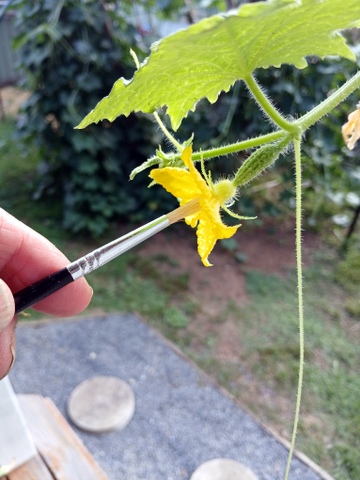
Hand pollinating a cucumber
Yields can be smaller – without a large mass of soil to draw water and nutrients from, plus other environmental factors like overheating, the yield from each plant may be reduced, so you might need to plant more of each one to make up for it.
A hungry Family – They may harvest your zone 0 goodies before you intended to, reducing yield, but at least the kids will be getting a taste for (very) fresh organic veg.
Whether you already have a productive yard associated with your Zone Zero or your Zone Zero is the only place you can grow food, there are a whole stack of great reasons for growing some of your own food. With a bit of planning, time and effort you can have a very productive Zone Zero.
Next Article in this series: Zone Zero Farm: Assessing and Planning


